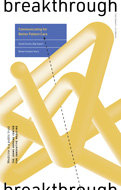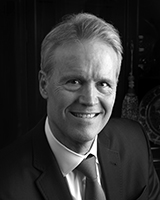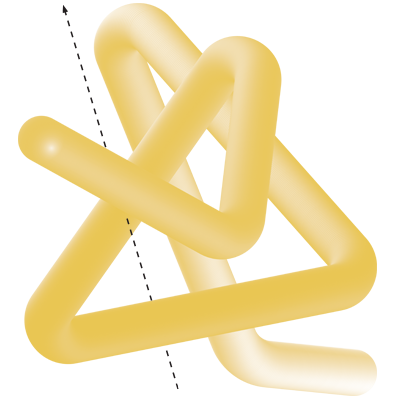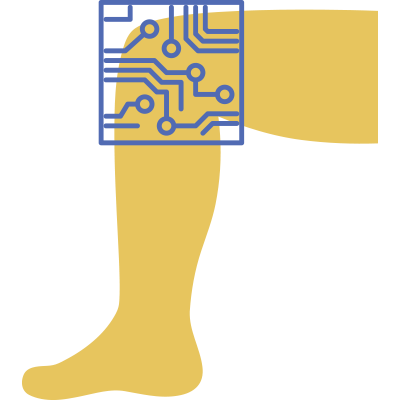

David B. Hellmann,
MD, MACP
If you or a loved one have spent any time in a hospital, you’ve experienced firsthand the indispensable role that nurses play in patient care. While physician time with patients is often limited, nurses are the throughline — they are there day in and day out, hour after hour, providing care, comfort and compassion for patients and their families. Nurses educate, advocate and empower. Nurses, in short, epitomize the ideal of getting to know patients as people.
So it’s particularly fitting that nurses have come to play such a vital role in CIM’s new Initiative for Humanizing Medicine (IHM). As you’ll read about in “Small Grants, Big Impact” (p. 6), in a project co-led by CIM’s first nurse scholar, Martha Abshire Saylor, more than 70 clinical teams from across the Johns Hopkins enterprise submitted proposals for lowcost ways to boost the patient experience and improve care. Many of those creative proposals were spearheaded by nurses or nursing teams.
Of course, the crucial role that nurses play in leading innovation is nothing new. In “Tales of Joy in Geriatrics” (p. 14), we share insights that geriatrics legend John Burton gained over his long and impactful career — a career that saw the launch of paradigm-changing programs to provide homecentered care for older adults. In his CIM Seminar, John was quick to give credit to Johns Hopkins nurses, whose partnership was key to building innovative programs that serve older patients.
These and other stories — including “Communicating Our Way to Better Patient Care” (p. 2), about the research and findings of IHM co-director Mary Catherine Beach — affirm that the Initiative for Humanizing Medicine is flourishing. So, too, is the CIM-supported Human Aging Project, where leaders are blending the cutting-edge technologies of engineering with medicine’s deep insights to dramatically improve the quality of life for older adults (“Restoring Luster to the Golden Years,” p. 8).
I hope that these and other articles in this issue of CIM Breakthrough will prove inspiring reading!

David B. Hellmann, M.D., M.A.C.P.
Aliki Perroti Professor of Medicine
Don Willett May 8th, 2024
Posted In:

David B. Hellmann,
MD, MACP
If you or a loved one have spent any time in a hospital, you’ve experienced firsthand the indispensable role that nurses play in patient care. While physician time with patients is often limited, nurses are the throughline — they are there day in and day out, hour after hour, providing care, comfort and compassion for patients and their families. Nurses educate, advocate and empower. Nurses, in short, epitomize the ideal of getting to know patients as people.
So it’s particularly fitting that nurses have come to play such a vital role in CIM’s new Initiative for Humanizing Medicine (IHM). As you’ll read about in “Small Grants, Big Impact” (p. 6), in a project co-led by CIM’s first nurse scholar, Martha Abshire Saylor, more than 70 clinical teams from across the Johns Hopkins enterprise submitted proposals for lowcost ways to boost the patient experience and improve care. Many of those creative proposals were spearheaded by nurses or nursing teams.
Of course, the crucial role that nurses play in leading innovation is nothing new. In “Tales of Joy in Geriatrics” (p. 14), we share insights that geriatrics legend John Burton gained over his long and impactful career — a career that saw the launch of paradigm-changing programs to provide homecentered care for older adults. In his CIM Seminar, John was quick to give credit to Johns Hopkins nurses, whose partnership was key to building innovative programs that serve older patients.
These and other stories — including “Communicating Our Way to Better Patient Care” (p. 2), about the research and findings of IHM co-director Mary Catherine Beach — affirm that the Initiative for Humanizing Medicine is flourishing. So, too, is the CIM-supported Human Aging Project, where leaders are blending the cutting-edge technologies of engineering with medicine’s deep insights to dramatically improve the quality of life for older adults (“Restoring Luster to the Golden Years,” p. 8).
I hope that these and other articles in this issue of CIM Breakthrough will prove inspiring reading!

David B. Hellmann, M.D., M.A.C.P.
Aliki Perroti Professor of Medicine
Don Willett May 8th, 2024
Posted In:

How are you?
It’s a well-worn greeting and one that most often elicits the reflexive response:
“I’m doing well.”
For that reason, notes Hopkins internist Mary Catherine Beach, doctors should not stop there when starting off a patient visit. The most effective follow-up?
“Is there anything in particular you want to discuss today?”
That’s among the key findings of a recent study Beach and her team conducted to pinpoint the most effective communication for conducting patient exams. It’s an increasingly important issue, given the time constraints facing today’s doctors and the growing volume of topics they must cover in a visit.
“When it comes to ‘agenda setting,’ we found that doctors should elicit patient agendas by using direct language and solicit additional concerns using ‘what else?’ vs. ‘anything else?’ because patients are more likely to raise concerns to direct questions,” notes Beach. Unfortunately, she says, her study found “the most effective agenda-soliciting questions are used least frequently by clinicians.” The result? Patients leave their visit without getting important concerns addressed.
Beach, who is co-director of CIM’s new Initiative for Humanizing Medicine and a Mary Gallo CIM Scholar, has been on a careerlong mission to improve the way clinicians communicate with patients. Her research, conducted in collaboration with dozens of researchers across Johns Hopkins, is probing issues such as: How can physicians best find out whether patients are taking their medications? What is the most effective way to achieve shared decision-making with patients? How should doctors demonstrate empathy?
“Not only is good communication the most important part of humanizing health care — it is one of the most important ways we can deliver high-quality clinical care,” says Beach, who holds a joint appointment with Johns Hopkins’ Berman Institute of Bioethics. “If we can’t communicate accurately and make sure we’ve conveyed information in a way that is understandable, our patients won’t be able to be healed because they won’t take their medication correctly or we will get their diagnosis wrong.”
‘Let’s Unpack That’
Much of Beach’s clinical work has focused on care for patients with HIV. Medication adherence is crucial for keeping the virus tamped down, but studies have shown that one-quarter to one-half of patients don’t take their antiretroviral medication consistently. Moreover, physicians often fail to detect the non-adherence, “which means lost opportunities for them to counsel their patients,” Beach says.
So what are the best questions to elicit truthful responses? In a study that involved analysis of dozens of audio recordings of physician encounters with non-adherent patients, she and her team found that one type of question clearly outperformed all others: negatively framed questions — that is, asking when (rather than if) doses had been missed (“When was the last time you missed a dose? Do you remember?”)
“The goal for doctors is not to make the patient feel worse by admitting they haven’t taken their medication or to put them on the defensive — but to open the conversation further,” says Beach. “With this and other ongoing studies, we’ve found that negatively framed questions do that best, allowing doctors to follow up with neutral questions, such as: ‘What happened then?’ Or, ‘Tell me more about that.’ Or, ‘Let’s unpack that.’”
Beach has shared these findings with colleagues in the HIV ambulatory care practice at Johns Hopkins whose communications were analyzed for the study — and at a national conference. “I’ve found that clinicians are excited to learn about findings they can put into practice,” she says.
Objectively Speaking
In the medication adherence studies and in the many other communication studies Beach has led or collaborated on, the science is rigorous and the analysis methods are complex, involving case control studies, surveys, and audio and statistical analysis.
In the past, says Beach, “we tended to think of this general idea of ‘bedside manner’ as a vague, subjective concept that was ‘nice’ but not definable. That it couldn’t be evaluated in any kind of objective way.”
In fact, she emphasizes, effective doctor/patient communication can be measured and analyzed, resulting in definitive conclusions and actionable results — information valuable to clinicians at every stage of their careers.
“Teaching effective communication can’t just happen with a single course during the first year of medical school,” Beach says. “We need to reinforce a culture where it’s a constant source of learning throughout medical school and residency training, and it should be revisited in continuing medical education.”
She continues, “It’s my life’s mission to conduct research to inform these efforts to forge more meaningful human connections — and better outcomes for patients.”
Don Willett May 8th, 2024
Posted In:

Little ideas can have an outsized impact on patients’ lives. That’s the idea behind the Initiative for Humanizing Medicine’s (IHM) recently launched “micro-grant” program.
We put out a call for ideas aimed at humanizing the patient experience and we received close to 70 creative proposals from interdisciplinary clinical teams across The Johns Hopkins Hospital, Bayview Medical Center and Suburban Hospital,” says Martha Abshire Saylor, the Mary Ousley CIM Scholar and the first CIM nurse scholar. She is stewarding the effort together with Scott Wright, director of the Miller Coulson Academy of Clinical Excellence and holder of The Anne Gaines and G. Thomas Miller Professorship, and Mary Catherine Beach, co-leader of the Initiative for Humanizing Medicine. Both Wright and Beach are Mary Gallo CIM Scholars.
Ultimately, 14 projects were chosen for funding of up to $1,500 each. Among them:
Newborn News: The hours and days immediately after birth are particularly difficult for families of infants born with serious health conditions, who often face complicated surgeries with uncertain outcomes. With the “Newborn News” initiative, parents of babies in the pediatric cardiac intensive care unit (PCICU) will be offered professional quality photos of their infants soon after their birth.
“Capturing the newborn and their family during this time can provide positive memories to last a lifetime, versus waiting until the postoperative period,” notes Megan Gilmore-Hodnicki, a registered nurse in the PCICU, who plans to recruit other nurses and palliative care committee members to participate in photography training. Newborn News will also inform families of religious ceremonies/baptism opportunities at the Johns Hopkins Children’s Center and support early family visits for siblings and extended family members before the infant is moved for medical stabilization.
Cooking with Care: Led by nurse practitioner Maureen Flood, who works with heart failure patients, the project will pull together recipes for healthy, nutritious meals from internal medicine clinicians (doctors, nurses and other staff members) from Johns Hopkins Community Physicians at Bayview.
“This project has the potential for improving the experience of nearly all of our patients, but the patients who will benefit most are those who have chronic illnesses such as hypertension and diabetes,” the team notes in their proposal. “Currently, our providers do what they can to offer dietary advice to patients, but it can be difficult to put those recommendations into practice for many folks, especially those with food insecurity, limited access to fresh produce, limited means or knowledge for cooking, and limited exposure to healthy meal options.”
Welcome to My World: The project is the brainchild of Gabriela Revesz, a registered nurse in the neurosciences critical care unit, whose team treats patients after they’ve experienced a stroke or other condition that impairs the patient’s ability to communicate.
With funds from the grant, the team will install white boards in the room of every patient on the unit that will display key pieces of personal information — photos, names of their pets and hobbies, things that comfort them, and cultural or religious beliefs.
Noting “the importance of ensuring that all team members have access to information about the patient as a human being in conversing with and caring for them,” Revesz adds, “it has been my experience that being able to communicate with patients on this human level at times de-escalates stressful situations that may otherwise end with the need for restraint and/or pharmacologic intervention.”
The micro-grants program was inspired by the earlier success of CIM’s “pyramid grants” program, launched in 2011, which Cynthia Rand — the Mary Gallo CIM Scholar (2022) and an active member of the Initiative for Humanizing Medicine — oversaw at Bayview.
“The idea is that it doesn’t take a lot of money to inspire people to brainstorm ideas that can really be beneficial for patients,” says Abshire Saylor. She says the funding committee was particularly pleased to see so much interest from nurses at Johns Hopkins. “Nurses don’t always have the experience with grant writing as physicians do, so we were intentional in creating an application that was accessible — and we made a push to communicate the opportunity to nurses in units across the divisions.”
Abshire Saylor and colleagues were also thrilled to receive applications from such a broad variety of care areas — inpatient, outpatient, pediatric, adult — and from a vast array of different departments.
The hope is that after getting their projects launched with the initial funding boost from the Initiative for Humanizing Medicine, teams will find ways to maintain their efforts through additional grants or by building their projects into departmental budgets.
And there is the potential for a ripple effect. “While we were only able to fund 14 projects, there were dozens of others that have great merit,” says Abshire Saylor. “Through collaborating to plan their proposals, we’re hopeful all teams will find creative ways to pursue them. Our goal is nothing less than to change the culture and humanize the patient experience across Johns Hopkins.”
Don Willett May 8th, 2024
Posted In:

As adults progress into old age, many become physically frail, characterized by a slower gait, lack of appetite and low levels of physical energy. Often, they also begin experiencing cognitive decline: Words become trickier to find, or following the plot of a complicated novel proves futile. “I’m not as sharp as I used to be,” is a common refrain.
Until fairly recently, says geriatrician Peter Abadir, the 2021 Salisbury Family CIM/HAP Scholar, geriatrics researchers have been “siloed” in their efforts to get at the roots of decline in aging. Some scientists and clinicians have focused on the mechanisms behind physical frailty, while others have zeroed in on cognitive decline.
“While that may be useful for getting grants, the reality is that most older people will decline both physically and cognitively,” he says, “and it is vital for us to gain a better understanding of central mechanisms that link both physical and cognitive decline — because they feed into each other.”
Abadir and other researchers affiliated with the CIM-supported Johns Hopkins Human Aging Project (HAP), including HAP director Jeremy Walston, the Salisbury Family Foundation CIM Scholar, are at the vanguard of new research aimed at better defining “cognitive frailty” — the simultaneous presence of physical frailty and cognitive impairment without dementia. By building consensus around a definition of cognitive frailty, including criteria for diagnosis, the HAP researchers aim to create a pathway for earlier detection and prevention. The ultimate goal? Improved quality of life in our later years.
“It’s important to start looking at the bigger picture,” says Abadir.
One promising strategy involves leveraging the power of technology. Abadir is principal investigator for the Johns Hopkins Artificial Intelligence & Technology Collaboratory for Aging Research (AITC), which was established in November 2021 with $20 million in funding from the National Institute on Aging. The goal of the AITC, which falls under the umbrella of the Human Aging Project, is “to spur development of artificial intelligence devices to improve the health of older adults and help them live independently for longer,” notes Walston.
Abadir says that it can be difficult for geriatricians to detect and measure decline in their patients in the earliest stages: “Changes in grip strength or in patients’ verbal abilities can be subtle.” That’s where technology comes in.
Research teams within the AITC are tapping into advances in wearable devices and sensor technology to create devices aimed at catching and measuring minute changes in a person’s gait or cognitive acumen. The researchers will soon be able to begin testing these devices with older patients and their caregivers at a new 10,000-square-foot hub on the Bayview campus. It will be jointly operated by the Johns Hopkins University School of Medicine and the Whiting School of Engineering, and allow AITC-affiliated engineers to work closely with clinicians and other researchers to come up with technology-driven solutions to some of the biggest challenges older people face.
This new engineering–medicine alliance, co-led by Abadir from the School of Medicine and Najim Dehak (a HAP Scholar and co-director of the JH-AITC pilot core) from the School of Engineering, “marks a pivotal moment in our quest to redefine aging,” says Abadir.
He adds, “By blending the cutting-edge technologies of engineering with the deep insights of medicine, this partnership heralds a promising future for the Human Aging Project. It represents not just a collaboration between disciplines but a unified front to improve the quality of life for older adults.”
Abadir envisions a day, not too far off in the future, when an older person will walk down a sensor-equipped hallway to her exam, and her gerontologist will say, “Mary, your gait has changed very subtly since your last visit. Let’s get you signed up for some physical therapy so that we can keep you active.”
As Abadir and his HAP colleagues continue their efforts to tease out the characteristics of cognitive decline, he says he is inspired by the potential to dramatically improve life for many older adults. “We have a golden opportunity to identify individuals in the earliest stages of cognitive frailty and to stop or slow decline before it progresses,” he says.
Don Willett May 8th, 2024
Posted In: